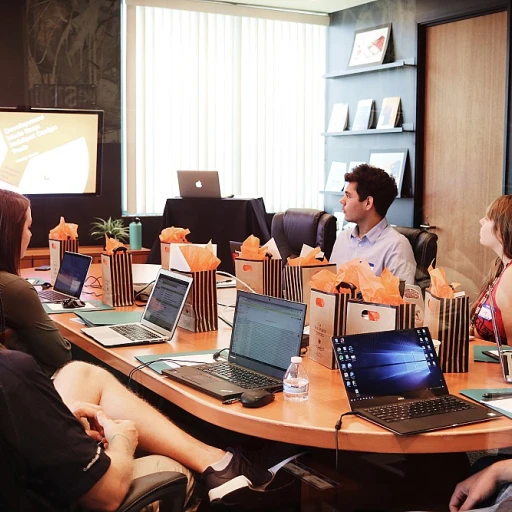
Understanding the Importance of Employee Retention
Recognizing the Critical Role of Employee Retention
Understanding why employee retention is vital can transform the way organizations perceive potential and current challenges within their workforce. Retention is not just about keeping employees—it involves nurturing and maintaining a work environment where employees genuinely want to stay and contribute. Employee retention serves as a cornerstone for enhancing workplace culture and maximizing business potential. An effective retention strategy can help:- Reduce turnover costs: High turnover leads to significant financial implications, affecting hiring, training, and overall productivity.
- Foster stability: With a stable workforce, organizations can maintain consistency in performance and quality, which is crucial for long-term success.
- Enhance employee engagement: This paves the way for creating a more satisfied and motivated team.
Identifying Key Factors Influencing Retention
Unraveling Influences on Workforce Stability
To truly enhance employee retention, it's vital to discern the various elements that could potentially sway an employee’s decision to stay or leave. The nuances of these influences are frequently discussed in leading human resources newsletters, offering valuable insights for business leaders.- Workplace Culture: A harmonious and inclusive workplace culture influences employee satisfaction significantly. According to various resources newsletter editions, fostering a sense of belonging can enhance loyalty.
- Talent Management Practices: How talent is managed directly impacts retention. People management that respects and values employees as professionals nurtures a stabilizing environment.
- Leadership Approaches: Effective leadership and enlightened people management are imperative for improving employee engagement and retention. Leaders who communicate transparently and offer support tend to maintain teams longer.
- Employee Engagement: Engagement stems from recognizing efforts and providing challenging yet rewarding opportunities. Trends indicate engaged employees are less likely to seek other opportunities.
- Work-life Balance: Modern employees value their personal time. Companies featured in leading newsletters are those that prioritize work-life balance, as seen frequently in resource management insights during April and March issues.
Strategies for Improving Employee Engagement
Boosting Engagement Through Effective Interaction
Employee engagement is a pivotal aspect in fostering loyalty and productivity within any organization. The frequent delivery of internal communication, such as monthly newsletters or weekly updates, ensures that professionals feel connected and informed on current trends affecting their workplace. These resources can serve as a reliable source of information regarding the latest in talent management and human resources.Encouraging Two-Way Communication
Promoting an environment where employees feel heard is crucial. Implementing strategies that enhance two-way communication can pave the way for stronger bonds between management and employees. Newsletters can be a vital tool, offering insights and inviting feedback from the team. By varying the newsletter frequency, from weekly to monthly, management can strike the right balance in keeping employees informed without overwhelming them.Fostering a Sense of Belonging
Business leaders can cultivate an inclusive workplace culture by promoting activities and initiatives that align with their employees' interests and values. Exploring talent management techniques and offering a platform for employees to showcase achievements can play a significant role in engagement. Additionally, by celebrating a 5-year milestone at work, organizations not only show appreciation for long-term commitment but also motivate others.Recognizing and Rewarding Efforts
Acknowledging accomplishments, whether big or small, positively impacts morale and motivation. A well-planned recognition program that aligns with current best practices can significantly enhance overall engagement. This approach not only attracts but also retains talented individuals by highlighting that their contributions are valued. The news of such recognition can be shared through newsletters, acting as powerful reminders of the company's appreciation. Engagement strategies, when informed by insights drawn from employee feedback, serve as a robust framework for retention. Regular subscriptions to well-curated resources, like a monthly newsletter, ensure that stakeholders are updated on the latest people management trends and innovations in human resources. This flow of information aids in constructing a resilient workplace culture, ultimately shaping a workplace where employees thrive.Creating a Supportive Work Environment
Fostering a Positive Workplace Culture
Creating a supportive work environment is a cornerstone of effective employee retention strategies. A positive workplace culture not only enhances employee engagement but also strengthens the overall team dynamics. Business leaders and human resource professionals must prioritize cultivating an atmosphere where employees feel valued and supported.
Encouraging Open Communication
One of the key elements in building a supportive environment is fostering open communication. Regularly scheduled meetings, whether weekly or monthly, can serve as a platform for employees to voice their concerns and share insights. This approach aligns with the best practices highlighted in various human resources newsletters, which emphasize the importance of feedback loops in people management.
Promoting Work-Life Balance
Another critical aspect is promoting work-life balance. Employees are more likely to stay with a company that respects their personal time and offers flexibility. Trends in talent management suggest that offering remote work options or flexible hours can significantly boost retention rates. Resources from monthly newsletters often highlight companies that have successfully implemented these strategies.
Recognizing and Rewarding Contributions
Recognition plays a vital role in creating a supportive work environment. Regular acknowledgment of employees' efforts can lead to increased motivation and loyalty. Human resources news frequently reports on organizations that have implemented effective recognition programs, leading to improved employee satisfaction and retention.
Building Trust Through Leadership
Leadership is a critical component in establishing a supportive workplace. Leaders who are approachable and transparent can build trust within their teams. Insights from human resources newsletters often underscore the importance of leadership in shaping workplace culture and driving employee engagement.
By focusing on these elements, companies can create a supportive work environment that not only retains talent but also attracts new employees. The frequency of communication, recognition, and leadership engagement are all pivotal in maintaining a thriving workplace culture.
The Role of Professional Development in Retention
Continuous Growth: Essential in Today's Work Environment
Employee retention is not solely about maintaining a positive workplace culture; it deeply intertwines with opportunities for professional growth. In the current competitive job market, offering avenues for development can significantly impact an organization's ability to retain talent.
Professionals in any industry desire to keep up with evolving trends and improve their skills. Therefore, providing employees with access to resources for learning, such as monthly newsletters featuring industry insights, can be pivotal. These newsletters can be a valuable source of information, enriching knowledge and engaging individuals.
Nurturing Talent Through Learning Opportunities
Businesses should focus on implementing comprehensive talent management strategies. This could include the integration of regular workshops, weekly training sessions, or even encouraging attendance at conferences. By doing so, organizations are investing in their most valuable assets – their human resources.
The importance of professional development is further emphasized by the feedback from employees. When discussing retention, employees often cite the availability of growth opportunities as a key factor influencing their decision to stay with a company. Hence, organizations that emphasize skill development as part of their leadership approach can anticipate better retention rates.
Embedding Development in Company Culture
A culture that prioritizes learning and development should be established. Regularly updating employees on new developments or business practices through employee engagement channels are beneficial. A dedicated newsletter frequency, whether monthly or even on a weekly basis, ensures a consistent flow of information, aiding in keeping the team informed and engaged.
Organizations that foster personal and professional growth and encourage the pursuit of new skills are more likely to retain their employees. As business leaders, committing to continuous development demonstrates a strong foundation for sustainable people management. Establishing platforms that facilitate this can lead to systems where everyone wins – the individual, the team, and the company.
Measuring and Analyzing Retention Success
Evaluating Retention Initiatives and Their Impact
One significant aspect of retaining your workforce involves continuously assessing the effectiveness of employee retention strategies. Whether you're gathering insights from a monthly newsletter or leveraging comprehensive human resources resources, the measurement of success in retention efforts is paramount for organizations.
Professional development, for instance, can greatly influence employee engagement and retention; however, it's crucial to analyze the actual impact of such programs. Resources like human resource newsletters can provide management insights and best practices to ensure your strategies remain aligned with current trends and workplace culture. Business leaders and team managers need to see how changes, possibly suggested in weekly or monthly newsletters, have positively affected retention trends.
Here are a few methods that can help measure and analyze retention success:
- Employee Feedback: Regularly conduct surveys and interviews to gather direct feedback from employees. Incorporating their insights into management can highlight areas for improvement.
- Turnover Rates: An obvious indicator, but crucial. Analyze turnover rates over various periods like February to January or March to February to understand patterns.
- Retention Metrics: Use detailed metrics and KPIs, which may be discussed in newsletters, to quantify retention efforts, such as the frequency of engagement initiatives and their attendance rates.
- Comparative Analysis: Compare current data to past months like October to September, December to November, or April to March to gauge improvement and identify ongoing challenges.
By employing these methods along with continuous feedback loops, organizations can optimize their talent management strategies to not just retain employees, but to foster a supportive and thriving workplace environment. Utilize human resource newsletters as a source to stay informed about emerging best practices and adapt them accordingly.












